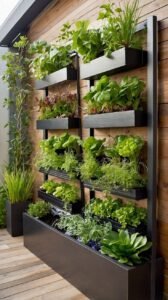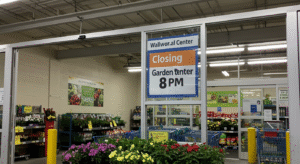Vertical Gardening: The Future of City Living

vertical garden
The rapid rise of skyscrapers and the resulting surge in population has led to a host of urbanization issues. These include a severe shortage of living spaces, escalating pollution levels, and a growing disconnect from nature. The current urban landscape is far from sustainable and poses health risks. The era of sprawling growth is a thing of the past. What we need now are ingenious solutions that blend nature and human habitation to address these pressing challenges.
These new concepts include vertical gardening. This is an innovative technique that utilizes unused space in cities, like walls and floors, to grow plants. Vertical gardening transforms barren surfaces into vibrant vertical gardens. Vertical gardening isn’t just about beauty—it’s an ecological guarantee that fights climate change, restores the balance in nature, and reintegrates nature into urban life. It is not merely a trend. It is a dire necessity for our future cities.
The Urban Space Dilemma
Vertical gardening is a direct response to the urgent problems caused by overcrowded city spaces. Urban living, with its concrete and steel structures, often lacks the greenery and open spaces that are vital for human well-being. Most utilized spaces, such as apartments and offices, do not leave room for greenery, gardening, or other nature-assimilative activities. This disconnect from nature not only affects the environment but also the people living in cities. The solution? Vertical gardens. These lush green walls transform unused space into recreational areas, reclaiming nature and yielding premium urban vegetation.
Green Islands And Vertical Gardens
The health problems associated with using concrete and steel in urban areas are known to everyone, but the air quality rarely is. Vertical gardens are one of the several ways to help reduce air pollution, as they provide a tremendous amount of oxygen for breathing and remove carbon dioxide. Vertical gardens assist in cleaning the air and absorb several pollutants such as nitrogen dioxide, ozone, and particulate matter. In this situation, humans, their activities, and buildings like large complexes increase the temperature of an area, making it considerably hotter than the adjacent rural area. Vertical gardens cool such regions and promote healthier outdoor spaces. In this way, vertical gardening helps to enhance metropolitan areas.
Food Security in the Vertical Era
Food security in urban areas is a developing concern as the world population increases significantly. Most metropolitan cities face a challenge regarding sustainable food production methods since there is limited arable land. Vertical gardening solves this dilemma. This method enriches citizens’ diets and improves the environment by cutting down fuel use, carbon emissions, and food waste. Unlike conventional agriculture, urban vertical farms help foster self-reliance and community fortitude, especially when fresh food is hard to find. The more cities practice vertical gardening techniques, the more effective they are in sustaining food security and sustainable urban agriculture.
Vertical gardens are gaining preference among builders and contractors because of their practical benefits. They aid in energy saving because vertical gardens improve a building’s insulation. This helps in reducing heating and cooling expenses. Additionally, vertical gardens provide people with natural sound barriers, which significantly reduce busy urban noise pollution, helping to mitigate noise pollution, a growing concern in urban areas that are constantly busy. Vertical gardens have significant benefits when it comes to sustainable design. This technology creates an ecological footprint without harming the environment, encouraging citizens to rethink how they consider the technologies they develop.
Economic and Social Benefits
Vertical gardening is not just about plants. It’s about people and communities. It creates jobs in horticulture, construction, and urban planning, strengthening local economies and providing new skills and training for workers in expanding green industries. These gardens also promote social development. Many urban gardening projects actively involve community members as participants, giving them a sense of identity and pride. These gardens can act as community focal points and facilitate social interaction and integration. Propelled by aesthetics, vertical gardens can also enhance the efficiency of a building, thus reducing city expenditures. All in all, vertical gardening is not just about plants, but about building socially and economically sustainable urban environments.
Tech Meets Nature
With the advancement of vertical gardens, technology significantly impacts its growth and success. Hydroponics and aeroponics systems are innovative as they allow for plant growth without the use of soil. Instead, water and nutrients are directly given to the plant’s roots. These techniques are ideal in vertical farming since water and resources are conserved, waste is reduced, and plant growth is maximized in limited spaces. Gardening has been made easier with the availability of innovative vertical gardening tools like automatic irrigation systems, sensor-based plant health monitors, and growth pattern tracking apps. All of these make it easier for city dwellers to take care of their vertical gardens. These technologies provide up-to-the-minute information that ensures plants grow under optimal conditions with minimal manual work. Vertical gardening, as it fuses nature and technology, is more efficient, sustainable, and available to everyone. This marks a new era in urban farming.






